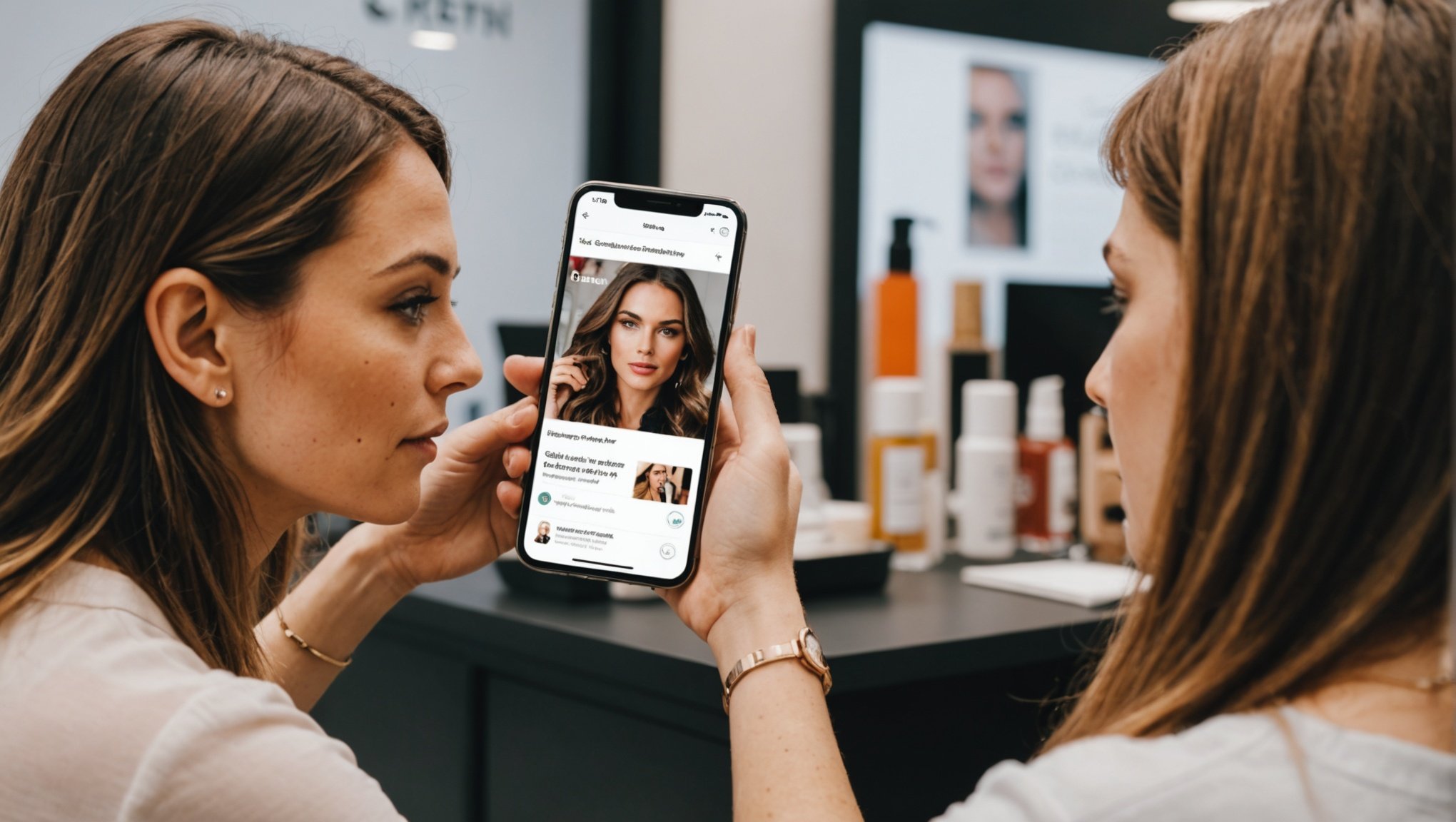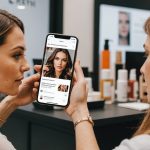In today's competitive beauty landscape, UK brands must innovate to capture consumer attention. User-generated content (UGC) offers a powerful solution, enabling brands to leverage authentic customer experiences. This guide explores strategies to harness UGC, providing insights on engagement, trust-building, and effective marketing integration. By inviting customers to share their stories and visuals, brands not only amplify their reach but also foster community and loyalty. Discover how to unlock the full potential of UGC to elevate your marketing approach and resonate with your audience.
Understanding User-Generated Content in Beauty Marketing
User-generated content (UGC) has become a cornerstone in the beauty marketing landscape, particularly within the UK. This form of content is created by consumers rather than brands, offering a genuine perspective that resonates with potential customers. As beauty brands seek to build trust and authenticity, UGC plays a crucial role in bridging the gap between the brand and its audience.
In parallel : Unlocking Success: A Guide for UK Businesses to Navigate and Comply with New Data Protection Regulations
Definition and Significance of UGC
User-generated content encompasses various forms, from reviews and testimonials to social media posts and videos. In the beauty sector, it is particularly significant because it provides real-life insights into product usage and effectiveness. This authenticity is invaluable, as it helps potential buyers make informed decisions based on real experiences rather than polished marketing campaigns.
Current Trends and Statistics
In the UK, the use of UGC in beauty marketing is on the rise. A recent survey indicated that over 70% of beauty brands are actively incorporating UGC into their marketing strategies. This trend is driven by the increasing reliance on social media platforms, where consumers share their beauty routines and product reviews. The impact of UGC is further highlighted by statistics showing that content generated by users receives higher engagement rates compared to traditional advertising.
Also to see : Unlocking Success: A Guide for UK Businesses to Navigate and Comply with New Data Protection Regulations
Benefits of Utilizing UGC
The benefits of integrating UGC into beauty marketing are manifold. Firstly, it enhances brand authenticity, as consumers tend to trust peer recommendations more than direct brand communications. Secondly, UGC fosters customer engagement by encouraging users to share their experiences, thus creating a community around the brand. Lastly, it serves as a cost-effective marketing tool, leveraging the creativity and reach of the consumer base without the need for significant advertising spend.
- Authenticity: Builds trust with potential customers
- Engagement: Encourages active participation from users
- Cost-Effectiveness: Reduces marketing costs through organic reach
By understanding and leveraging user-generated content, beauty brands in the UK can enhance their marketing strategies, leading to increased consumer trust and loyalty.
Types of User-Generated Content for Beauty Brands
Exploring the diversity of user-generated content can significantly enhance a beauty brand's marketing strategy.
Varieties of UGC
User-generated content (UGC) in the beauty industry comes in many forms, each serving a unique purpose. Customer reviews are perhaps the most straightforward, providing direct feedback on products. These reviews are invaluable as they offer potential customers insights from those who have already tried the products. Photos and videos are also popular, often shared on social media platforms, showcasing real-world usage and results. These visual elements are engaging and can effectively demonstrate a product's effectiveness. Testimonials add another layer of authenticity, often highlighting personal stories and experiences with a brand.
The Role of Social Media Platforms
Social media platforms play a pivotal role in the promotion and dissemination of UGC. They provide a space where users can easily share their experiences and creativity. Platforms like Instagram and TikTok are particularly influential, as they are visually driven and have a broad reach. These platforms allow brands to interact with their audience directly, fostering a sense of community and engagement. Encouraging users to post their photos and videos using specific hashtags can amplify a brand's visibility and credibility.
Encouraging and Curating UGC
To harness the full potential of UGC, beauty brands must actively encourage and curate content. This can be achieved by creating campaigns that invite users to share their testimonials or by offering incentives for customer reviews. Brands can also curate content by featuring user-generated photos and videos on their official channels, providing recognition and encouraging further participation. A well-curated UGC strategy not only enhances brand authenticity but also builds a loyal community around the brand.
- Customer Reviews: Direct feedback from product users
- Photos and Videos: Visual demonstrations of product use
- Testimonials: Personal stories and experiences
By effectively utilizing various types of UGC, beauty brands can create more engaging and trustworthy marketing content.
Platforms for Leveraging User-Generated Content
Exploring the right platforms is essential for beauty brands aiming to maximize the potential of user-generated content (UGC).
Key Social Media Platforms for UGC
In the realm of beauty marketing, social media platforms like Instagram, TikTok, and Facebook are pivotal for leveraging UGC. These platforms offer a dynamic space where beauty enthusiasts and brands can interact seamlessly. Instagram, with its visually driven interface, allows users to share captivating photos and videos, showcasing products in real-world settings. TikTok, known for its engaging short-form videos, provides an opportunity for creative content that can go viral, enhancing a brand's reach. Facebook, with its extensive user base, offers a platform for detailed reviews and community engagement. Each platform has unique features that can be harnessed to boost brand visibility and authenticity.
UGC Aggregation Tools
To efficiently manage the influx of user-generated content, beauty brands can utilize UGC platforms and aggregation tools. These tools streamline the collection, organization, and analysis of content across various channels. Tools like Yotpo, Olapic, and Stackla are popular choices, offering features such as content moderation, analytics, and seamless integration with existing marketing strategies. By employing these tools, brands can ensure that the most relevant and impactful user content is highlighted, enhancing their overall marketing efforts.
| UGC Aggregation Tools | Features |
|---|---|
| Yotpo | Content moderation, analytics |
| Olapic | Seamless integration |
| Stackla | Content curation |
Best Practices for Engagement
Engagement strategies are crucial for encouraging participation from customers on social media platforms. Beauty brands should create campaigns that invite users to share their experiences, perhaps through contests or exclusive hashtags. Recognizing and featuring user-generated content on official channels not only validates the contributors but also motivates others to participate. Additionally, responding to comments and engaging with the audience fosters a sense of community, further enhancing brand loyalty. By implementing these strategies, brands can effectively leverage UGC to build a strong connection with their audience, ultimately driving brand growth and customer trust.
Implementing User-Generated Content in Marketing Strategies
Exploring effective ways to integrate UGC into marketing campaigns can enhance brand engagement and authenticity.
Steps to Integrate UGC into Existing Marketing Campaigns
Incorporating user-generated content (UGC) into existing marketing strategies requires a structured approach. Initially, brands should identify the types of UGC that align with their campaign goals. This could include customer reviews, photos, or testimonials. Once identified, integrating these elements into marketing materials, such as social media posts or website features, can increase authenticity. It's essential to monitor the performance of UGC to ensure it resonates with the target audience and supports the campaign's objectives.
Creating Campaigns that Encourage UGC Participation
To foster UGC participation, brands can design campaigns that actively encourage consumer involvement. For instance, launching a contest that asks users to share their experiences with a product can generate a wealth of content. Offering incentives, such as discounts or product samples, can further motivate participation. Implementing specific hashtags and prompts can help organize and track the content generated, making it easier to curate and utilize effectively.
- Incentives: Discounts, samples, or exclusive offers
- Hashtags: Facilitate content organization
- Contests: Encourage active user engagement
Guidelines for Compliance with UK Laws and Regulations
When integrating UGC, compliance with UK laws and regulations is crucial. Brands must ensure that all content used adheres to advertising standards and data protection laws. Obtaining explicit permission from users to feature their content is a fundamental step. Additionally, clearly communicating how the content will be used helps maintain transparency and trust. Staying informed about legal requirements and regularly reviewing compliance practices can mitigate potential risks.
By effectively implementing user-generated content into marketing strategies, beauty brands can enhance their campaigns, build consumer trust, and foster a vibrant community around their products.
## Case Studies of Successful UGC Usage in UK Beauty Brands
Exploring the real-world application of UGC in the beauty industry.
### Analysis of Notable UK Beauty Brands
Several UK beauty brands have successfully harnessed the power of **user-generated content (UGC)** to enhance their marketing strategies. One such example is Glossier, which has built a strong community by encouraging customers to share their experiences through social media. This approach not only boosts brand visibility but also fosters a sense of belonging among users.
Another noteworthy case is Lush, known for its vibrant **UGC campaigns**. By inviting customers to share photos and reviews of their favorite products, Lush has created a dynamic and engaging online presence. These examples underscore the effectiveness of UGC in building authentic connections with consumers.
### Lessons Learned from UGC Campaigns
The success stories of these brands offer valuable insights into the strategic use of **UGC**. Firstly, creating a platform for customers to express their opinions and experiences can significantly enhance brand authenticity. Secondly, leveraging social media to amplify user content can increase brand reach and engagement.
A key lesson is the importance of actively engaging with the community. By responding to user-generated content and featuring it on official channels, brands can strengthen customer relationships and encourage further participation.
- **Create Engagement**: Encourage users to share content
- **Amplify Reach**: Utilize social media platforms
- **Strengthen Relationships**: Engage with community actively
### Impact of UGC on Brand Loyalty and Sales Metrics
The impact of **UGC** on brand loyalty and sales is profound. Brands that effectively integrate user-generated content into their marketing strategies often see a marked increase in consumer trust and loyalty. This is because potential customers are more likely to trust the experiences of their peers over traditional advertising.
Moreover, UGC can drive sales by providing authentic testimonials and real-life demonstrations of product efficacy. For instance, a survey by Nielsen found that 92% of consumers trust recommendations from other consumers more than branded content. This trust translates into higher conversion rates and increased sales.
| Brand | Strategy | Outcome |
|----------|--------------------------------|------------------------------|
| Glossier | Community engagement | Enhanced brand visibility |
| Lush | Photo and review sharing | Dynamic online presence |
| Nielsen | Consumer trust in recommendations | Higher conversion rates |
By examining these **success stories**, brands can learn to harness the full potential of UGC, ultimately driving growth and fostering a loyal customer base.
Measuring the Impact of User-Generated Content
Understanding how to effectively measure the impact of user-generated content (UGC) is crucial for beauty brands seeking to enhance their marketing strategies.
Key Performance Indicators for UGC
Key Performance Indicators (KPIs) are essential for assessing the effectiveness of UGC in marketing campaigns. Brands can track metrics such as engagement rates, which measure how users interact with content. This includes likes, shares, and comments on social media platforms. Another important KPI is conversion rate, indicating how many users take action after engaging with UGC. Additionally, reach and impressions are critical, as they show the potential audience size exposed to the content. Monitoring these KPIs helps brands understand the success of their UGC initiatives.
- Engagement Rates: Likes, shares, comments
- Conversion Rate: Actions taken post-engagement
- Reach and Impressions: Audience size and exposure
Tools for Tracking UGC Performance
To efficiently track UGC performance, brands can utilize various analytics tools. Tools like Google Analytics and Sprout Social provide insights into how UGC impacts brand visibility and engagement. These platforms offer features such as sentiment analysis, which evaluates the tone of user interactions, and trend tracking, which identifies popular themes and content types. By using these tools, brands can gather valuable data to refine their UGC strategies.
| Tool | Features |
|---|---|
| Google Analytics | Sentiment analysis, trend tracking |
| Sprout Social | Engagement metrics, audience insights |
Analyzing Customer Feedback
Customer feedback plays a pivotal role in refining UGC strategies. Analyzing feedback helps brands understand customer preferences and perceptions, allowing for more targeted content creation. Feedback can be collected through surveys, reviews, and direct interactions on social media. By incorporating customer insights, brands can tailor their UGC campaigns to better align with audience expectations, ultimately enhancing brand loyalty and engagement.











